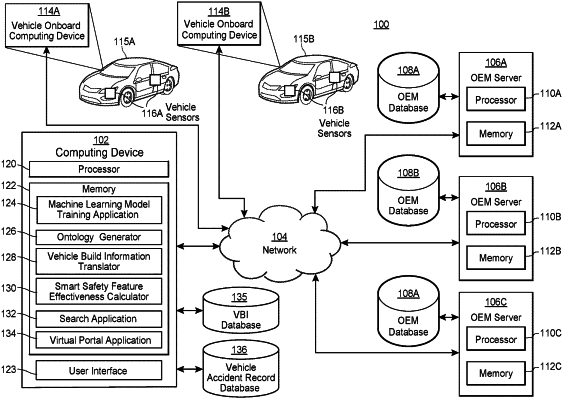| CPC G06Q 10/20 (2013.01) [G06N 20/00 (2019.01); G06Q 30/0283 (2013.01); G06Q 40/08 (2013.01)] | 22 Claims |

|
1. A computer-implemented method for use in determining reparability of a vehicle, the method comprising:
obtaining, by one or more processors, vehicle data from a vehicle data repository, the vehicle data comprising vehicle parts data including parts repair cost information, and the vehicle data being stored in an original equipment manufacturer (OEM)—agnostic terminology;
generating, by the one or more processors, a list of variables from the vehicle data;
training, by the one or more processors, a machine learning algorithm to generate a reparability metric by:
inputting variables of the list of variables into the machine learning algorithm;
for each inputted variable, generating a correlation metric between the inputted variable and a cost to repair the vehicle;
for each generated correlation metric, determining if the generated correlation metric is below a correlation metric threshold;
in response to determining that a generated correlation metric is below the correlation metric threshold, removing the variable corresponding to the generated correlation metric from consideration by the machine learning algorithm;
training the machine learning algorithm based upon variables not removed from consideration by the machine learning algorithm; and
further training the machine learning algorithm by re-running the machine learning algorithm; and
inputting, by the one or more processors, information of a particular part into the trained machine learning algorithm to generate a reparability metric for the particular part.
|